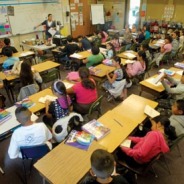
More and more and more children are being diagnosed with Attention Deficit Hyperactivity Disorder (ADHD) in this country. The rates are far too high, crazily so in some parts of the USA. Once diagnosed, the customary response is to medicate the kids. Not good. As troublesome as it is, this is only one aspect of a larger pattern of dysfunction.
It is very interesting that the regions of the USA with the highest rates of ADHD are the same regions with the highest levels of narcotic pain prescriptions given to adults. That is not good either, but at least that reality is recognized as a problem by government and medical authorities. The government is clamping down on abuse of prescription pain pills. We also need to put the brakes on the rising tide of overmedicating our children.
Overuse of medication is a cultural issue. There is a widespread, but false, belief that our children need to be drugged. It is wrong, harmful to so many, and yet another example of our tendency – doctors, parents, teachers and society alike to overlook the basic health habits that are better than medicines.
Kids get fidgety if you confine them, for example, in a chair in a classroom. That fidgeting then earns them the ADHD label and a prescription to stop their squirming. Drugging a child so that he behaves just the way you want him to behave is not the answer. What is the cure? Well, moving (i.e., exercise) is part of it. That shouldn’t be so hard to figure out.
Many studies show that these kids are better from exercise. We all know that exercise is good for everyone. The impact on these children is more than that generally positive effect. Research shows that kids with ADHD in fact experience more benefit from exercise than other children.
My experience is quite convincing. The great majority of children taking medication for ADHD do better without medication. Diet, exercise, and addressing other health issues go a long way towards helping these children become successful in school and life. The simple reality that some kids (and adults) need to move more than others, must be recognized rather than suppressed. Teachers, parents and doctors need to look at each child as individuals and learn to help each child specific to her own nature, abilities and challenges, rather than medicating problems away.
The “medicating” approach can be necessary in some few and unfortunately damaged cases. At best medication manages. It does not cure. The other approaches, particularly the essential health habits, do cure and their usual “side effect” is good health.
(Photo Nick Lovejoy, San Benito County Today)
